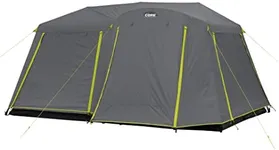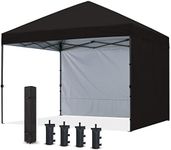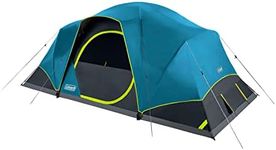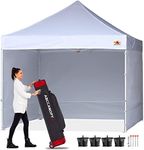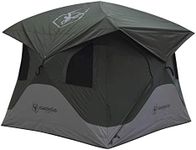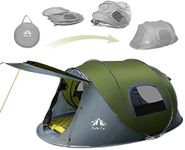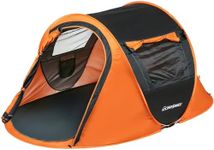Buying Guide for the Best Pop Up Tents
Choosing the right pop-up tent can make your outdoor experience much more enjoyable, whether you're camping, attending a festival, or just spending a day at the beach. Pop-up tents are designed for quick and easy setup, but there are several important features to consider to ensure you get the best fit for your needs. Think about how many people will use the tent, the weather conditions you expect, and how portable you need it to be. Understanding the key specifications will help you make a smart choice.CapacityCapacity refers to how many people the tent is designed to sleep. This is important because it determines how comfortable you'll be inside the tent. Tents are usually labeled as 2-person, 4-person, etc., but keep in mind that these ratings are often based on a snug fit with little extra space. If you want more room for gear or to move around, consider choosing a tent with a higher capacity than the number of people using it. For solo campers or couples, a 2-person tent might be enough, but families or groups should look for larger options.
Setup MechanismThe setup mechanism is what makes a pop-up tent unique. Most pop-up tents use a spring-loaded frame that allows the tent to unfold and take shape almost instantly. This is important because it saves time and effort, especially if you arrive at your campsite late or in bad weather. Some pop-up tents require a simple push or pull to lock into place, while others might need a bit more adjustment. If you want the fastest and easiest setup, look for tents that advertise true 'instant' or 'automatic' pop-up features.
Weight and Packed SizeWeight and packed size refer to how heavy the tent is and how small it becomes when folded up. This matters if you need to carry the tent for any distance, such as hiking to a campsite or traveling by public transport. Lighter and more compact tents are easier to carry but may offer less space or fewer features. If you plan to camp close to your car, weight may not be as important, but for backpackers or festival-goers, a lightweight and compact tent is a better choice.
Weather ResistanceWeather resistance describes how well the tent protects you from rain, wind, and sun. This is crucial for staying comfortable and safe outdoors. Look for features like waterproof materials, taped seams, and sturdy frames. Some tents are designed mainly for fair weather and may not hold up in heavy rain or strong winds, while others are built for more challenging conditions. If you expect unpredictable weather, prioritize tents with good waterproof ratings and strong construction.
VentilationVentilation refers to how well air flows through the tent, which helps prevent condensation and keeps the inside comfortable. Good ventilation is important, especially in warm or humid conditions. Tents with multiple windows, mesh panels, or vents allow for better airflow. If you plan to camp in hot climates or with several people in the tent, choose a model with plenty of ventilation options.
Ease of Packing AwayEase of packing away is about how simple it is to fold the tent back up and fit it into its carry bag. Some pop-up tents are easy to set up but can be tricky to pack away, which can be frustrating at the end of your trip. Look for tents with clear instructions or color-coded parts to make packing up easier. If you value convenience, check reviews or product descriptions to see how users rate the packing process.
